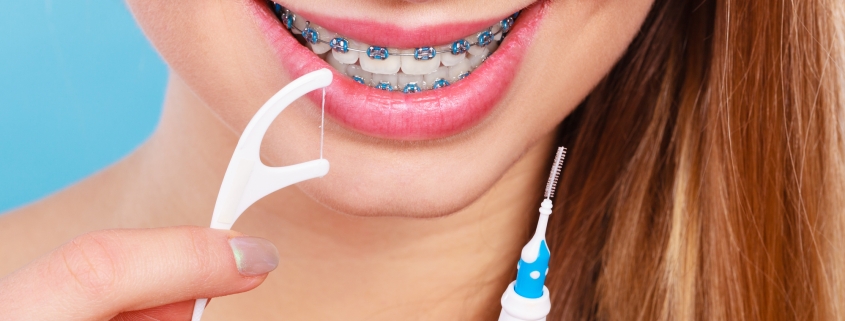Caring for Teeth While Wearing Braces in Adults
Wearing braces as an adult is a significant step toward achieving a straighter, healthier smile. However, maintaining good oral hygiene during orthodontic treatment is essential to prevent common issues such as tooth decay, gum disease, and staining. Proper care requires extra attention to detail because braces can make cleaning teeth more challenging. This article provides a comprehensive guide on how to care for your teeth while wearing braces as an adult.
1. The Importance of Oral Hygiene with Braces
Braces create additional nooks and crannies where food particles and plaque can accumulate, making it easier for cavities and gum disease to develop. Adults with braces must be vigilant about their oral hygiene to avoid problems that could delay treatment or compromise the final results.
Here’s why maintaining good oral hygiene with braces is crucial:
Preventing Tooth Decay: Plaque buildup around braces can lead to cavities, especially around the brackets and wires where food particles often get trapped.
Avoiding Gum Disease: Inadequate brushing and flossing can lead to gum inflammation, or gingivitis, which can progress to more serious periodontal disease if left untreated.
Protecting Enamel: Braces can make teeth more vulnerable to enamel decalcification, leading to white spots or even permanent damage if oral hygiene is neglected.
Ensuring Effective Treatment: Poor oral hygiene can lead to complications that may prolong treatment time and affect the alignment process.
2. Brushing with Braces
Brushing your teeth while wearing braces requires a slightly different approach than usual to ensure that all areas around the brackets and wires are thoroughly cleaned.
Use a Soft-Bristled Toothbrush: A soft-bristled toothbrush or an electric toothbrush with a small head is ideal for cleaning around braces. These brushes can gently clean teeth and gums without causing damage to the braces or irritation to the gums.
Brush After Every Meal: It’s important to brush after every meal to remove food particles and plaque that can get trapped in the braces. If brushing after every meal isn’t possible, at least rinse your mouth with water to dislodge food particles.
Angle Your Brush: Hold the toothbrush at a 45-degree angle to the gumline, and brush both above and below the brackets. Make sure to brush the outer, inner, and chewing surfaces of your teeth, as well as the braces themselves.
Use an Interdental Brush: An interdental brush, or proxabrush, is a small, narrow brush designed to clean between the wires and around the brackets. It’s particularly effective at reaching areas that a regular toothbrush might miss.
Choose Fluoride Toothpaste: Fluoride toothpaste helps strengthen enamel and prevent cavities. After brushing, spit out the excess toothpaste, but avoid rinsing with water to allow the fluoride to remain on your teeth longer.
3. Flossing with Braces
Flossing with braces can be more challenging, but it’s essential for removing plaque and food particles between the teeth and under the gumline.
Use a Floss Threader: A floss threader is a small, flexible tool that helps guide floss under the wires of your braces. Once the floss is threaded, gently move it up and down between the teeth, being careful not to snap it against the gums.
Try Orthodontic Floss: Orthodontic floss, which comes with a stiff end for threading, can make flossing with braces easier. Some types of floss are also designed to expand to clean around braces more effectively.
Consider Water Flossers: Water flossers, or oral irrigators, use a stream of water to clean between the teeth and along the gumline. They can be a great alternative for those who find traditional flossing difficult with braces. However, they should be used in conjunction with regular flossing rather than as a replacement.
4. Using Mouthwash
Mouthwash can be a helpful addition to your oral hygiene routine, especially when wearing braces.
Choose an Antimicrobial or Fluoride Mouthwash: Antimicrobial mouthwash helps reduce bacteria that cause plaque and gum disease, while fluoride mouthwash strengthens enamel and helps prevent cavities. Look for a mouthwash that meets your specific needs and use it once or twice a day.
Rinse After Brushing: Use mouthwash after brushing and flossing to remove any remaining debris and to help reach areas that brushing and flossing might miss.
5. Avoiding Certain Foods
When wearing braces, it’s important to avoid foods that can damage the brackets and wires or get stuck in them, leading to hygiene problems.
Sticky Foods: Avoid sticky foods like caramel, chewing gum, and toffee, as they can get stuck in the braces and are difficult to clean off.
Hard Foods: Hard foods like nuts, popcorn, and hard candies can damage the brackets and wires. Cut harder foods like apples and carrots into small pieces before eating.
Sugary Foods and Drinks: Limit sugary foods and drinks, as they increase the risk of cavities. If you do consume sugary items, brush your teeth afterward.

